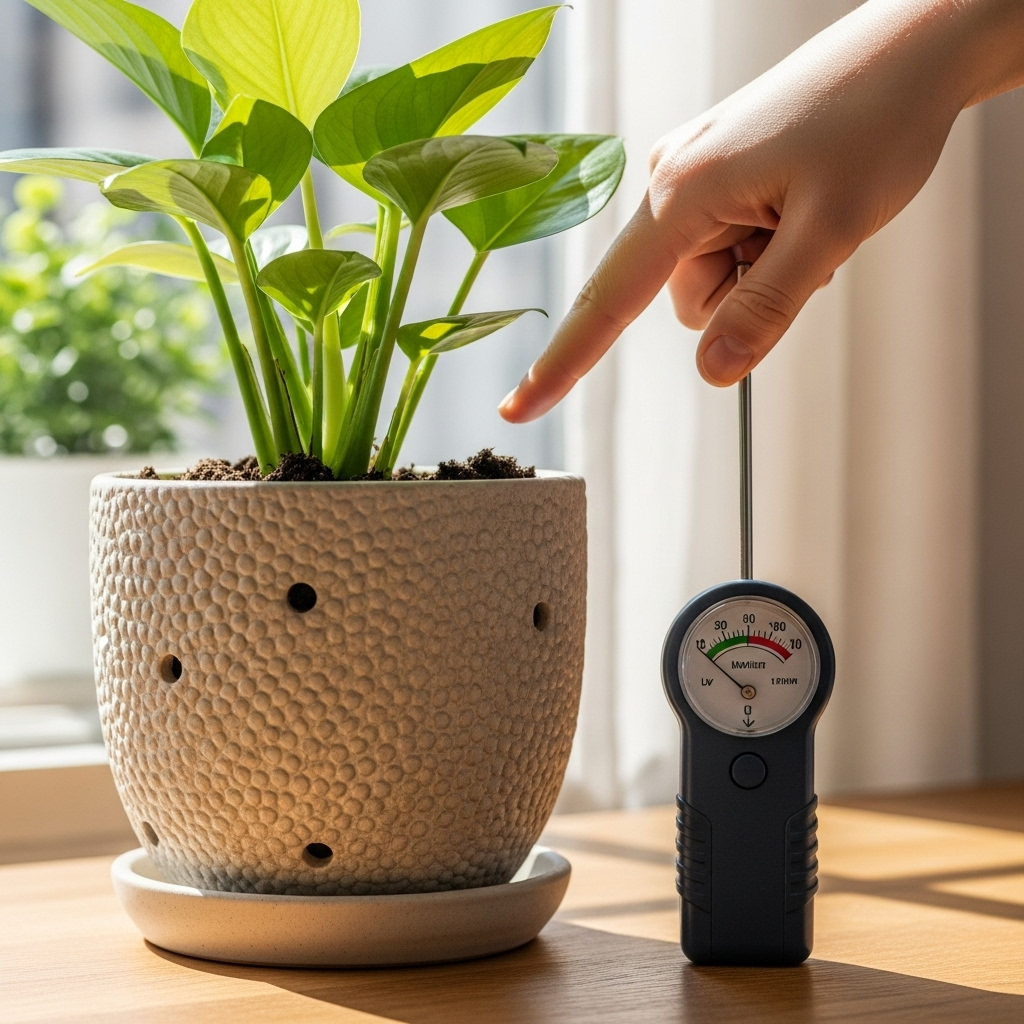Overwatering is one of the most common mistakes in plant care. While water is essential, too much of it can cause roots to rot and eventually kill your plant. Learning how to water wisely will keep your plants healthy and thriving.
Why Overwatering Is Harmful
- Roots suffocate when soil is constantly wet.
- Excess water leads to root rot and fungus.
- Nutrients are washed out of the soil.
Signs of Overwatering
- Yellowing leaves.
- Mushy or soft stems.
- Soil that stays wet for days.
- Mold or fungus on the soil surface.
Tips to Prevent Overwatering
1. Check Soil Moisture
- Stick your finger 2–3 cm (1 inch) into the soil.
- If it’s dry, it’s time to water.
- Use a moisture meter for extra precision.
2. Use Proper Pots
- Always choose pots with drainage holes.
- Place a saucer underneath to collect excess water.
3. Adjust to the Season
- Water more in spring and summer when plants grow.
- Reduce watering in fall and winter when growth slows.
4. Learn Each Plant’s Needs
- Succulents need little water.
- Tropical plants need more frequent watering.
- Research your plant type for specific care.
5. Water Deeply, Not Often
- Water until it drains out of the bottom.
- Let soil dry before watering again.
What to Do If You Overwater
- Stop watering immediately.
- Let the soil dry out.
- Repot the plant in fresh, dry soil if roots show signs of rot.
Final Thoughts: Balance Is Key
Plants thrive on balance. By checking soil, using proper pots, and understanding each plant’s needs, you can avoid overwatering and keep your green companions happy and healthy.

